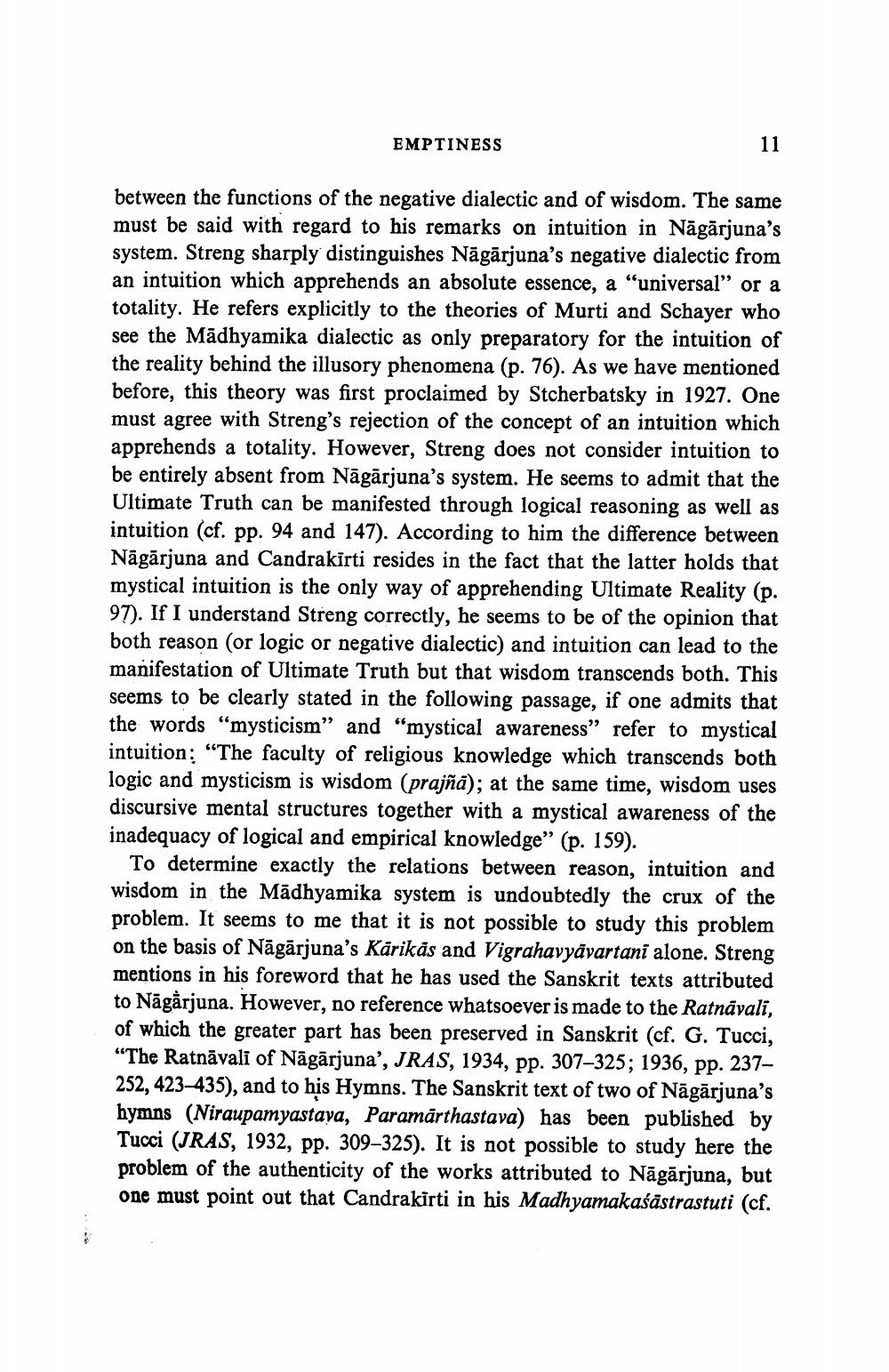Book Title: Emptiness Author(s): J W De Jong Publisher: J W De Jong View full book textPage 5
________________ EMPTINESS 11 between the functions of the negative dialectic and of wisdom. The same must be said with regard to his remarks on intuition in Nāgārjuna's system. Streng sharply distinguishes Nāgārjuna's negative dialectic from an intuition which apprehends an absolute essence, a "universal" or a totality. He refers explicitly to the theories of Murti and Schayer who see the Mādhyamika dialectic as only preparatory for the intuition of the reality behind the illusory phenomena (p. 76). As we have mentioned before, this theory was first proclaimed by Stcherbatsky in 1927. One must agree with Streng's rejection of the concept of an intuition which apprehends a totality. However, Streng does not consider intuition to be entirely absent from Nāgārjuna's system. He seems to admit that the Ultimate Truth can be manifested through logical reasoning as well as intuition (cf. pp. 94 and 147). According to him the difference between Nāgārjuna and Candrakirti resides in the fact that the latter holds that mystical intuition is the only way of apprehending Ultimate Reality (p. 97). If I understand Streng correctly, he seems to be of the opinion that both reason (or logic or negative dialectic) and intuition can lead to the manifestation of Ultimate Truth but that wisdom transcends both. This seems to be clearly stated in the following passage, if one admits that the words “mysticism” and “mystical awareness” refer to mystical intuition: “The faculty of religious knowledge which transcends both logic and mysticism is wisdom (prajñā); at the same time, wisdom uses discursive mental structures together with a mystical awareness of the inadequacy of logical and empirical knowledge” (p. 159). To determine exactly the relations between reason, intuition and wisdom in the Mādhyamika system is undoubtedly the crux of the problem. It seems to me that it is not possible to study this problem on the basis of Nāgārjuna's Kärikäs and Vigrahavyävartani alone. Streng mentions in his foreword that he has used the Sanskrit texts attributed to Nāgårjuna. However, no reference whatsoever is made to the Ratnāvali, of which the greater part has been preserved in Sanskrit (cf. G. Tucci, "The Ratnāvali of Nāgārjuna', JRAS, 1934, pp. 307–325; 1936, pp. 237– 252, 423-435), and to his Hymns. The Sanskrit text of two of Nāgārjuna's hymns (Niraupamyastava, Paramarthastava) has been published by Tucci (JRAS, 1932, pp. 309-325). It is not possible to study here the problem of the authenticity of the works attributed to Nāgārjuna, but one must point out that Candrakirti in his Madhyamakaśāstrastuti (cf.Page Navigation
1 ... 3 4 5 6 7 8 9
